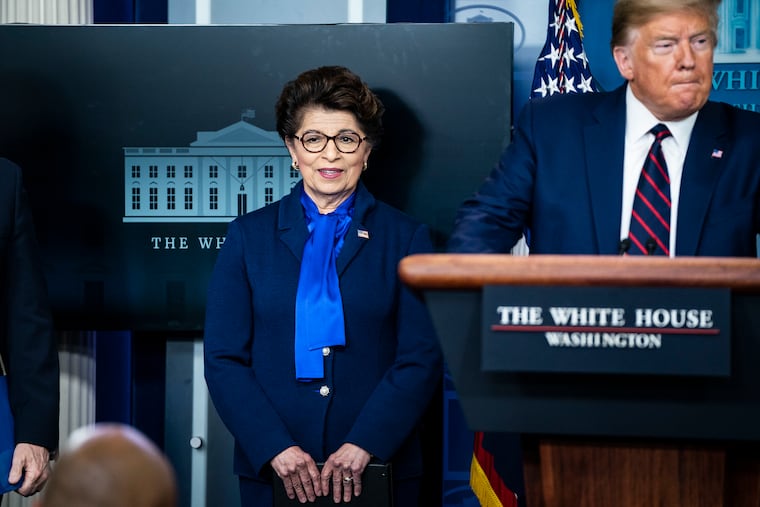SBA offers total forgiveness for loans of $50,000 or less, helping PPP small-business borrowers
If you borrowed $50,000 or less, your loan’s forgiven — period. But will you owe taxes?

Business owners who borrowed $50,000 or less through the Small Business Administration’s emergency loan program learned last week that their debts are forgiven entirely — provided they file the right paperwork.
But accountants are urging costumers to hold off applying for forgiveness to see if the government further sweetens the pot.
» READ MORE: SBA loan forgiveness prompts relief, but also confusion about timeline and rules
The Small Business Administration and U.S. Treasury issued the new guidance for small-business borrowers with loans of $50,000 or less under the Paycheck Protection Program, or PPP.
The PPP loans were included in the Coronavirus Aid, Relief, and Economic Security (CARES) Act, which Congress passed earlier this year to provide emergency assistance for individuals, families, and businesses affected by the coronavirus pandemic.
Business owners who borrowed $50,000 or less can fill out a simplified one-page form and can ignore some of the calculations required of other borrowers. A link to the Form 3508S is available at sba.gov, or by googling “SBA PPP forgiveness application form.”
This new rule is welcome relief, said partner Jordan Kendall of Marcum’s Philadelphia office.
“The average loan size was about $101,000, so it’s not a large figure,” Kendall said.
Borrowers under the PPP loan program were required to spend the money on qualified expenses, such as payroll costs, rent, utilities, and mortgage interest, to have the loans forgiven.
Now, small- and micro-business borrowers of $50,000 or less will have their loan wiped out entirely, even if they had to cut employees or wages.
“This means there are now no parameters for borrowers of $50,000 or less,” Kendall said.
He recommended business owners speak with their bankers to ask about the new rules and learn when forgiveness programs open.
Treasury Secretary Steven Mnuchin said PPP loans totaled $525 billion to America’s small businesses, “providing critical economic relief and supporting more than 51 million jobs,” in a press release Thursday.
But the tax implications of this debt forgiveness are unclear, said David Zalles, a Blue Bell certified public accountant.
“Yes, these [$50,000 or less] loans are 100% forgiven, but there’s still the issue of whether the money will be taxable or tax free,” as Congress intended, Zalles said.
That nuance will require new legislation or inclusion in the next stimulus bill, he said.
This may cause a timing problem, whereby deductions for these loan expenses may be taken in 2020, but the income from the loan, as viewed by the IRS, is not reported until 2021, when loan forgiveness occurs.
“There is significant discussion among accountants and tax professionals on how this will be handled,” Zalles said.
Why the $50,000 cutoff?
The SBA initially said it would streamline forgiveness for loans of $150,000 or less.
But on Thursday, the SBA shed some light on its thinking. The new rules affect about 3.5 million loans (68% of all PPP borrowers), but only $62 billion (or 12%) of all the SBA money lent, according to the latest SBA figures.
Of the 3.5 million loans, nearly half reported one or zero employees on their applications. If you’re the sole proprietor or business owner, technically “you’re not an employee,” Kendall said.
Should you wait to file for forgiveness?
Martin Abo of Abo & Co. forensic accountants recommended that his clients wait even longer to file for loan forgiveness.
The SBA began approving PPP forgiveness applications from banks and other lenders on Oct. 2.
“We are suggesting PPP recipients of all sizes hold off applying for the forgiveness — even if you anticipate receiving full forgiveness,” he wrote to clients.
“Right now there appears no urgency for borrowers to rush into the forgiveness process because we see it potentially getting better and easier,” he said.
“There may even be the possibility of getting a little bit more money or a threshold for waiving the application for forgiveness. We should just wait and see what comes out of Washington.”